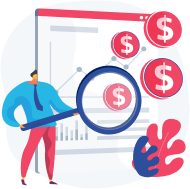Introduction of AI
Artificial intelligence has grown really fast from becoming a niche to a revolutionary force that touches almost every thread of our life. Moving toward 2025, AI will continuously lead beyond the boundaries of possibility, driving innovations to reshape industries and increase productivity while solving some of the most high-priority challenges across the world.
Basically, the AI field is the development of the ability within computer systems to perform activities that, if performed by humans, will require intelligence. The activities include reasoning, learning, problem-solving, communicating, perceiving, and interacting with the real world. Advancement in AI technologies most frequently available and widely used today diversifies and sophisticates its applied areas. AI becomes an inclusion into modern trends of technology and business strategy.
What are AI Tools?
AI tools can be defined as software applications or platforms that harness artificial intelligence for a specific function, but such an application augments the activity of the other systems. The tools can vary from a simple script with automation to sophisticated algorithms used in autonomous systems or analysis of vast data.
Essentially, AI tools are about the ability to offer an extension of human ability—that is, making us work more efficiently and further our judgment in making better decisions. Examples would include tasks such as automating routine work, seeing data for hidden patterns, suggesting to a customer for the enhancement of their experiences, or even self-content creation. Times have changed and hence, the tools will only get more and more powerful, intuitive, and integrated into our everyday life.
Types of AI
- AI in Healthcare
Already, AI is turning diagnostics, treatment, and management of disease into predictive analytics that simplify doctors’ decision-making as robotic surgery systems bring preciseness to AI. This indispensable tool in modern medicine will further increase its contribution in the domains of personalized medicine, drug development, and remote monitoring of patients till 2025. - Adaptive AI
Adaptive AI systems are what learn and improve with time by adapting to new data seamlessly while also acclimating to changes in surrounding conditions at the instance. In this regard, there is capability in being able to make decisions on its performance without human interventions, a feature well applicable to such dynamic fields as financing, cybersecurity, and customer service. - Quantum Computing
Quantum computing is going to move computing into another level. AI will make a giant leap with this tremendous increase in computational power. This is an advanced technology that makes use of principles related to quantum mechanics in the processing of information up to levels of complexity that classical computers could never approach before. The expected parameters in which this will further boost machine learning algorithms or other complex optimization issues within AI involve potential breakthroughs such as cryptography and drug discovery. - Cybersecurity AI
Whereas in the past, threats easily outmaneuvered all defenses, with challenges becoming sophisticated today, comes the need to have an equally robust AI role developed. Cybersecurity tools will be driven by AI to detect threats in real-time, identify any potential vulnerabilities that exist within the systems, and even predict the occurrence of attacks before they happen. As soon as 2025, worldwide digital infrastructures should have AI at the core. - AI Chips
AI chips are specialized hardware designed to boost an application’s performance. While an AI algorithm is running, such chips work much more efficiently than traditional processors, thus providing faster, more energy-efficient AI systems. As more devices—from smartphones and laptops to autonomous vehicles—come to incorporate AI, the demand for AI chips to power such applications will not be evasive. - Augmented Reality:
The abetment with AI meant that Augmented Reality was developing more and more immersive capabilities at such speeds where the line between the virtual and the real world could become very fine. The AI algorithms within AR systems could identify targets, movements, and placement of the mined digital content over the physical space. This could become mainstream within half a decade in the gaming, retail, and education sectors. - Generative AI
Generative AI would be those systems responsible for creating new content, be it in the form of text, image, music, or even complete virtual worlds. They get driven by machine learning models to come up with an output that is quite indistinguishable from that of a human. Creativity, content creation, and virtual environments will be highly reliant on generative AI by 2025. - Edge AI:
Edge AI simply means the deployment of algorithms “at the edge” of a network, closer to the source of data generation. This will result in low latency and maximize privacy since data processing will be done near the source without movement to a central server. Edge AI will hold the key for several IoT, vehicle autonomous systems, and smart city applications in 2025. Blockchain and AI
Bringing blockchain technology and artificial intelligence together creates safe, transparent, and decentralized systems for data management and transactions. On the other hand, AI will likely help blockchain consensus algorithms, detect fraud, and increase the efficiency of smart contracts. The two are expected to produce new possibilities for finance, supply chain, and more.
DeepBrain AI depicts the latest neural network architectures that are capable of information processing by design of human brain architecture. It learns complex patterns and decides based on large amounts of data. DeepBrain AI enables massive improvements in natural language processing, image recognition, and autonomous systems by 2025. - Explainable AI
As the intricacy of AI systems continues to grow, it becomes very imperative to understand how they can really make a decision. Explainable AI tries to make AI transparent and interpretable to the user for gaining trust in the AI-driven outcomes and to know the reason behind a certain outcome. This would be really useful in sectors like health, finance, and the legal field, where the decisions virtually are of consequential nature.
AI tools provide a wide array of advantages toward their adoption in every sector, in terms of taking up some very key tasks. These include the following: efficiency, since AI tools are able to automate routine tasks and in turn free up the time of employees to deal with something more complex and creative; improved decision-making, because of insight extraction from large data sets and identification of their patterns; and automation plus optimization, cutting costs.
- Personalization: Track the customers’ preferences and behaviors through AI tools to personalize their experience, thereby improving their satisfaction and loyalty.
- Scalability: The introduction of an AI tool into the business under consideration will make scaling an easy and quick task. Consequently, a business will be able to navigate further workloads without seeing the rise in expenses.
- Predictive Power: A thing of the tool that shall be used to predict trends, customer behaviors, or risks that may be involved. Hence, give the business a chance and time to take necessary action.
- Innovation: AI tools drive innovation through the creation of new products, services, and business models, which were previously not even imagined.
Top 5 Current Trending AI Tools of 2024
Now, 2025 is not so far and many AI tools are making hype in today’s technology. Here are the top five trending AI tools of 2024;
- ChatGPT:
Overview: ChatGPT was an OpenAI AI model developed for generating human-like text and conducting conversations. It has been highly effective in writing, coding, and customer support; thus, it finds easy applications across industries. - DALL-E:
Overview: Another OpenAI creation, DALL-E does that of generating pictures by textual description. This has been sought after highly in order to provide a very detailed and creative visualization, making this an industry changer in everything—from design through to advertisement to entertainment. - Adobe Firefly:
Overview: It’s Adobe Firefly—The AI Creative Suite for the Artist, Designer, Content Creator. Firefly places itself right at the core of producing content by driving creativity and productivity in image editing, content generation, and automation in design with the help of AI. - GitHub Copilot:
Overview: GitHub Copilot is a coding assistant powered by artificial intelligence aimed at helping developers to write more code more efficiently. From suggesting code snippets to autocomplete functions and complete code blocks based on context, it proves to be an indispensable tool in the arsenal of tools of any developer. - Gemini:
Overview: Gemini is a hi-tech AI tool that combines natural processing with machine learning to provide next-generation data analysis and decision-making support. It is quite effective in sectors where extracting meaning from data is highly necessary, like finance, health, and research.
Best Paid AI Tools in 2024
Despite a plethora of free AI tools, some very good paid options come with advanced features and premium support that could justify such investment. Some of the best paid AI tools that one should consider are those listed below:
- Salesforce Einstein
Overview: Salesforce Einstein is an AI-powered platform built inside the Salesforce CRM that delivers predictive analytics, automated workflows, and personalized buyer experiences. It will be particularly helpful for businesses that are always looking to make progressive improvements in their sales and marketing. - IBM Watson
Overview: IBM Watson is a completely integrated suite of AI tools that offer advanced capabilities in the domain of Natural Language Processing, Machine Learning, and Data Analytics. Healthcare, Finance, and Customer Service use Watson extensively to make more informed decisions and streamline organizational operations. H2O.ai - H2O.ai
Overview: An open-source platform for AI featuring tools for machine learning, deep learning. Paid-for products increase scalability and advanced security features, among others, for supporting deployments of the platform in big enterprises. - UiPath:
Overview: UiPath is one of the best RPA platforms infused with AI capabilities for the automation of business functions. Capabilities would depend on the span of automation, integrations and level of enterprise support in the paid plan. - C3 AI
Overview: C3 AI provides a full-stack set of AI applications purposed for an enterprise. Powering major use cases in predictive maintenance, anti-fraud, and unified supply chain, the robust C3 AI platform comes with the tools needed for an enterprise to design, develop, and operate AI applications at truly enterprise scale.
FAQs
- What is meant by AI?
Basically, AI is the concept of making human intelligence artificially simulated in machines, which are then reprogrammed to exhibit acts of thinking, learning, and problem-solving. An AI system is that which does all the tasks that, in any other case apart from humans, would have required human intelligence, such as speech recognition, decision-making, and language translation. - How is AI used in everyday life?
Artificial Intelligence has found application in almost every walk of life, from the virtual personal assistants like Siri and Alexa to recommendation systems like Netflix and Amazon. Besides, there are autonomous vehicles and personalized advertising. Based on AI, in many industries related to areas such as healthcare, finance, and logistics, driving forces for many back-office processes are based. - What can be some of the ethical issues associated with AI?
Some of the AI ethical concerns involve privacy or data, algorithm bias, and jobs. As in the modern world AI systems are being increasingly integrated, it is of growing relevance to address these concerns to ensure that the development and use of AI are carried out responsibly. - What Does the Future Look Like for AI?
That is, the future will see more advanced and highly prevalent AI. A few of the tasks envisioned for AI are autonomous servicing of the highly complex kind of tasks, augmentation of human capabilities, and solving the next great challenge of the planet. Consistent with next-generation AI development is going to be the application of quantum computing, enablement with xAI, and edge AI.
AI Tools are expensive not only to develop but also to maintain, but the scenario will change and become the opposite.
Tools are available across a myriad of AI price ranges: free, subscription, and the like. Most of the free tools have only very basic features, while many of the charged ones provide advanced capabilities, premium support, and scalability. This will require businesses to consider their requirements and budget to figure out which of the AI tools will be more appropriate for them.




